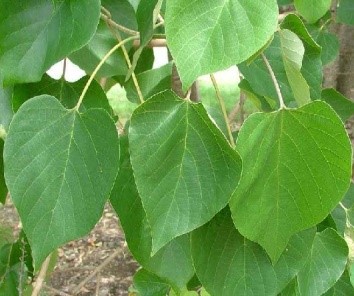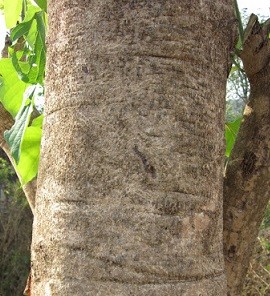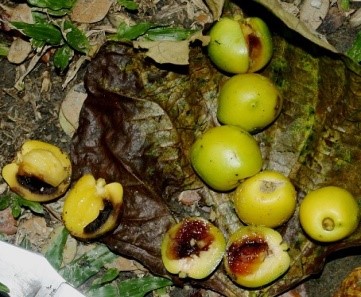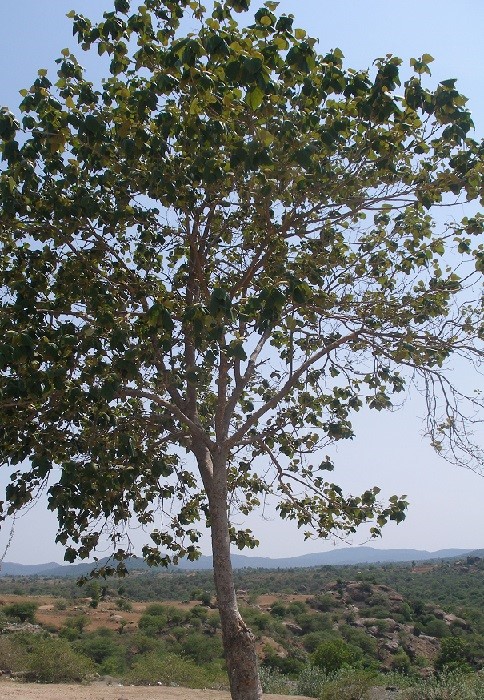Trees
Gmelina arborea Roxb.
Gmelina arborea Roxb.
Description :
A
medium to large sized, deciduous tree. It reaches heights of 20 to 30 m with
average diameters of 60 cm. large trees may have clear boles of 6 to 9 m. Open
grown trees have wide crowns, heavy branches and tapered boles. Its large
leaves are simple, alternate, 7 to 15 cm long with long stalks. The leaves are
heart shaped (cordate). The bark is corky, smooth, grey to cream colored. On
older trees the bark will peel off in large pieces giving the bole a patchy
appearance. The reddish brown or yellow flowers are borne when the trees are
leafless. They are tubular in shape, 2.5 cm across and occur in bunches at the
ends of the branches. The fruits are a succulent drupe 3 cm long. It flowers in
February to April, and its fruit matures between May and June. Each drupe
contains a hard stone (seed). It is susceptible to root and stem rots as well
as shoot destroying insects. It can be reproduced both from seed and
vegetatively. Seeds lose their viability after a year of storage. A relative
fast-growing tree with reported volume yields of 25 to 35 m3/ha/yr
on rotations of 5 to 8 years. Straight, interlocked, medium course textured
Grains. Color light yellow to brown, with high strength having specific gravity
of 0.48 and a calorific value of 4763 Kcal/kg.
Distribution :
The
tree is native to the moist forests of India, Southeast Asia and as far east as
southern China. In Pakistan there may be natural stands in Mirpur and Azad
Kashmir. It has been successfully cultivated in the plains and in irrigated
plantations. It appears to be well established in parts of the Sindh. An intolerant
tree that grows on a variety on deep, well drained soils, including acid or
calcareous loams. Thin soils will retard growth rate, and it will not grow on
waterlogged sites. It is adapted to a precipitation zone of 1000 to 2500 mm/yr,
although it can stand periods of extended drought. It has a temperature range
of 5 to 40°C but is very susceptible to frost damage. It prefers a humid to
sub-humid, hot tropical climate, usually at elevations up to 1000 m.
Uses :
A
tree potentially used in irrigated plantation in Sindh and Punjab and as an
ornamental. With good management it’s an excellent wood producer. The fruit is
edible, and the flowers are used by honeybees. A good farm forestry tree in
many areas of Pakistan. Also used for construction, particle board, match
sticks, pulp, pit props, fodder, furniture, cordage, plywood, apiculture,
fruit, and medicinal.



